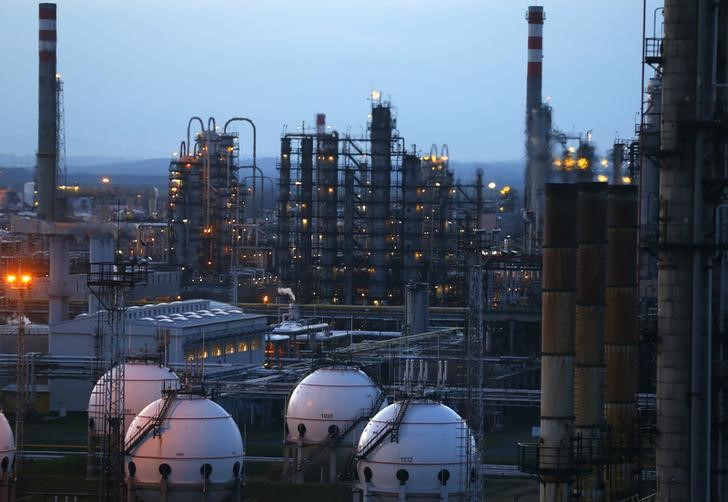Investing.com — Oil prices fell slightly in Asian trade on Thursday, capping off three days of gains amid growing pressure from a strong dollar, while uncertainty over the U.S. debt ceiling persisted as a June deadline to reach a deal grew closer.
Crude prices also saw some profit taking after racing to three-week highs in the prior session. The rally was largely driven by expectations of tighter U.S. supplies as the travel-heavy summer season approaches.
A warning from the Saudi Arabian energy minister against shorting oil also boosted prices.
But this was countered by growing fears of a U.S. debt default, as lawmakers marked little progress towards reaching a deal to raise the debt ceiling. A U.S. default is expected to push the country into recession and have far-reaching consequences for the global economy, with Treasury Secretary Janet Yellen positing a June 1 deadline for a default.
futures fell 0.2% to $78.16 a barrel, while futures fell 0.4% to $74.06 a barrel by 21:30 ET (01:30 GMT). Both contracts rallied nearly 2% on Wednesday after data showed U.S. sank by a substantially bigger-than-expected margin in the past week.
Strength in the weighed on oil markets, as expectations that U.S. rates will remain higher for longer pushed the greenback to a two-month high against a basket of currencies.
The of the Fed’s May meeting, released on Wednesday, showed that while policymakers were somewhat mixed over raising rates further in June, they also gave no indication to cut interest rates this year, presenting a hawkish outlook for the dollar.
A stronger dollar makes crude more expensive for international buyers, stifling demand.
Other factors also saw markets fear slowing demand this year. Major importer China is facing a resurgence in COVID-19 cases, which the government expects to peak by late-June. While the variant of the virus affecting China appears to be mild, markets feared any more disruptions to economic activity.
The outbreak comes as a string of indicators for April showed that a Chinese economic recovery was running out of steam, casting doubts over forecasts that China will drive oil demand to record highs this year.
Weak economic indicators from the U.S., euro zone, and the UK pointed to a sustained slowdown in manufacturing activity, positing a dim outlook for economic growth this year.
Oil prices are still trading negative so far this year, and are set to end lower for the fifth consecutive month on concerns that slowing economic growth will erode demand.
Read the full article here




